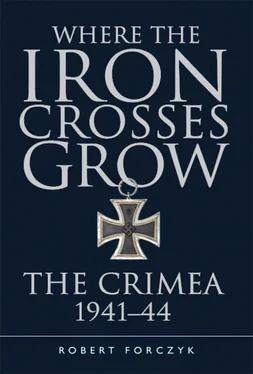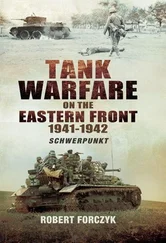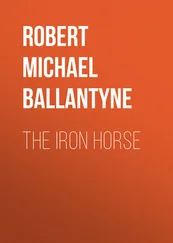____________
Although Barbarossa did not address the neutralization of the Black Sea Fleet, the Luftwaffe included it in its first-strike plan. Before dawn on June 22, 1941, a small number of He-111 bombers from Fliegerkorps IV’s 6./KG 4 approached Sevastopol unchallenged and managed to drop their bombs near Vice-Admiral Oktyabrsky’s headquarters. It was only a raid, not a serious attack, but it rattled Oktyabrsky and inflicted 230 civilian casualties. [2] Aleksandr B. Shirokorad, Bitva za Krym [ Battle of the Crimea ] (Moscow: AST, 2005).
Thereafter, Fliegerkorps IV conducted occasional raids and reconnaissance flights on Sevastopol, as well as some aerial mine-laying operations off the port, but the main fighting was occurring in the western Ukraine.
Shortly after the attack on his headquarters, Oktyabrsky initiated defensive mine-laying operations, and his ships emplaced about 3,000 mines by mid-July. He also decided to commit the VVS-ChF to a campaign of attacking the Romanian ports of Constanta and Sulina. The first raid conducted by 3 DB-3F from 2 MTAP and 6 SB-2 from 40 BAP on the afternoon of June 22 met little resistance and succeeded in inflicting minor damage. However, the Royal Romanian Air Force was alert when the VVS-ChF sent 73 naval bombers on June 23, and Romanian Hurricane fighters shot down three. The next day, German Bf-109 fighters from III./JG 52 also got involved and shot down ten of 32 naval bombers. [3] Christer Bergström and Andrey Mikhailov, Black Cross, Red Star: The Air War Over the Eastern Front, Volume 1 (Pacifica, CA: Pacifica Military History, 2000), pp. 67–69.
Within the first five days of the war, the VVS-ChF lost 22 naval bombers, including some of their best-trained aircrew. Oktyabrsky was apparently ignorant of the arrival of significant Luftwaffe strength in Romania, which threatened his surface warships and made raids on Romania costly.
Although his fleet’s mission was primarily defensive, Oktyabrsky was inclined from the beginning to use his surface warships and submarines to strike at Romania. In the first 24 hours of the war, he dispatched four Shchuka -class submarines to attack Romanian shipping, but this was only a preliminary step. On the evening of June 25, Oktyabrsky sent the flotilla leaders Moskva and Kharkov to bombard the Romanian port of Constanta, with the heavy cruiser Voroshilov and two destroyers as a covering force. The two Soviet flotilla leaders approached the Romanian coast and opened fire at 0358hrs on June 26. Although their 130mm shells managed to set some oil-storage tanks alight and damage a rail yard, the Soviet destroyers were unaware that the Germans had installed two 28cm coastal-defense batteries to protect Constanta. Battery Tirpitz engaged the two Soviet flotilla leaders, which caused them to break off the action and turn away eastward – straight into a Romanian minefield. The Moskva , moving at 30 knots, hit one or more mines and broke in two, sinking within five minutes; 268 sailors were killed and 69 survivors were picked up by the Romanians. The cruiser Voroshilov was also damaged by a mine. Retreating eastward, the Kharkov was badly damaged by the German coastal battery and had to be towed. Fortunately for the Soviet flotilla, the Luftwaffe was busy with a raid by the VVS-ChF and did not appear in force to sink the damaged Soviet warships. The result of the raid on Constanta, aside from the damage suffered by the Black Sea Fleet, was to cause Oktyabrsky to be much more cautious in his use of surface warships.
Oktyabrsky continued to send the VVS-ChF to attack targets in Romania with small-scale raids, which also began to bomb facilities further inland. On July 13, six DB-3F bombers attacked the Ploesti oil refinery – a critical source of fuel for the Wehrmacht – and managed to damage a refinery and set 9,000 tons of oil on fire. However, enemy fighters shot down four of the six bombers, and in response the VVS-ChF shifted primarily to night raids to reduce losses. On August 13, Soviet naval bombers damaged the King Carol Bridge over the Danube, which disrupted the Ploesti–Constanta pipeline. Nevertheless, Ploesti was 340 miles from the VVS-ChF air bases in the Crimea, and aircraft like the DB-3F were tactical, not strategic, bombers; at best, each bomber could carry only six 100kg bombs to targets in Romania. While the VVS-ChF raids on Romania did not inflict substantial damage on the Axis war effort, they did help to create the impression that Soviet air bases in the Crimea were a threat.
____________
The original plan for Operation Barbarossa , the invasion of the Soviet Union, issued in Führer Directive 21 on December 18, 1940, did not even mention the Crimea or the Black Sea Fleet. Hitler intended that Barbarossa would result in the rapid destruction of the best part of the Red Army, followed by the occupation of most of the western Soviet Union, which would satisfy his lust for natural resources and Lebensraum (living space). The priority of the German operational effort was weighted on the Leningrad and Moscow axes, and the only specified objectives for Generalfeldmarschall Gerd von Rundstedt’s Heeresgruppe Süd was to “destroy all Russian forces west of the Dnepr in Ukraine,” and “the early capture of the Donets Basin, important for war industry.” [4] Hugh Trevor-Roper (ed.), Hitler’s War Directives 1939–1945 (London: Birlinn Ltd, 2004), p. 96.
The occupation of the Crimea and the elimination of the Black Sea Fleet were only implied tasks at the outset of the German invasion, to be accomplished during mop-up operations. After the issuing of Führer Directive 21, Hitler and the Oberkommando der Wehrmacht (OKW) focused much of their attention and planning efforts on the Balkans, the Mediterranean, and collaboration with Axis partners, rather than further fleshing out operational details of Operation Barbarossa . Indeed, it remained a rather vague plan right up to the moment of execution, and this would force the Wehrmacht to constantly shift resources as Hitler changed his strategic priorities.
Yet Barbarossa was not the only German planning being made in regard to the Soviet Union. Once Hitler confirmed his intention to invade the Soviet Union, SS-Obergruppenführer Reinhard Heydrich’s Reichssicherheitshauptamt (Reich Main Security Office, or RSHA) began working on Generalplan Ost (Master Plan East), which was intended to conduct ethnic cleansing on a massive scale in conquered Soviet territory. Not only Jews, but also Ukrainians, and, eventually, all Slavs, were targeted for elimination by the SS-Einsatzgruppen. Once the indigenous populations were reduced to a manageable level, where the survivors could be employed as slave labor, German colonists would move in to “Germanize” the conquered territory. Unlike the Wehrmacht, Heydrich did make plans for Ukraine and the Crimea; the Crimean climate was regarded as ideal for colonists, and Ukrainian wheat and Crimean cotton would be valuable resources. Prior to Barbarossa , pseudo-scientific archeological research conducted by the SS Ahnenerbe organization pointed to an ancient Gothic presence in the Crimea as a precursor to modern German colonization of the peninsula. [5] Heather Pringle, The Master Plan: Himmler’s Scholars and the Holocaust (New York City: Hyperion Books, 2006).
Once Generalplan Ost was underway , Heydrich expected that about half the Crimea’s population would be ethnic German by the mid-1960s.
At the start of Barbarossa , SS-Gruppenführer Otto Ohlendorf’s Einsatzgruppe D was attached to Heeresgruppe Süd. Ohlendorf’s unit was to follow close behind Rundstedt’s advancing armies and eliminate large concentrations of civilians deemed hostile to the Reich. Although many army leaders later claimed ignorance of SS activities in the Soviet Union, the cooperation between the Wehrmacht and the SS-Einsatzgruppen was a vital prerequisite in order for Generalplan Ost to succeed.
Читать дальше












